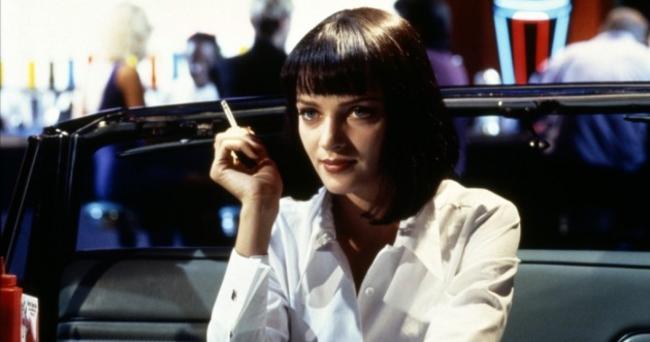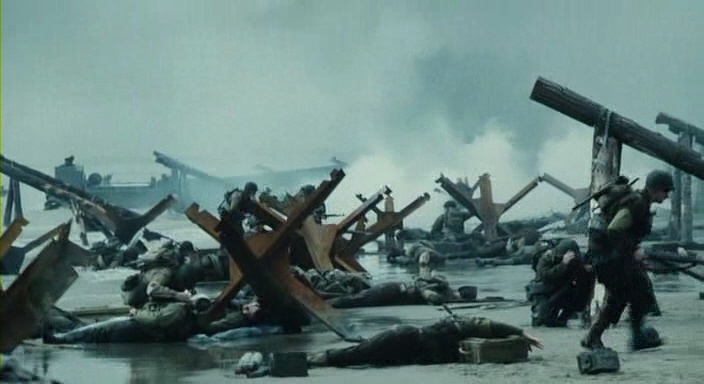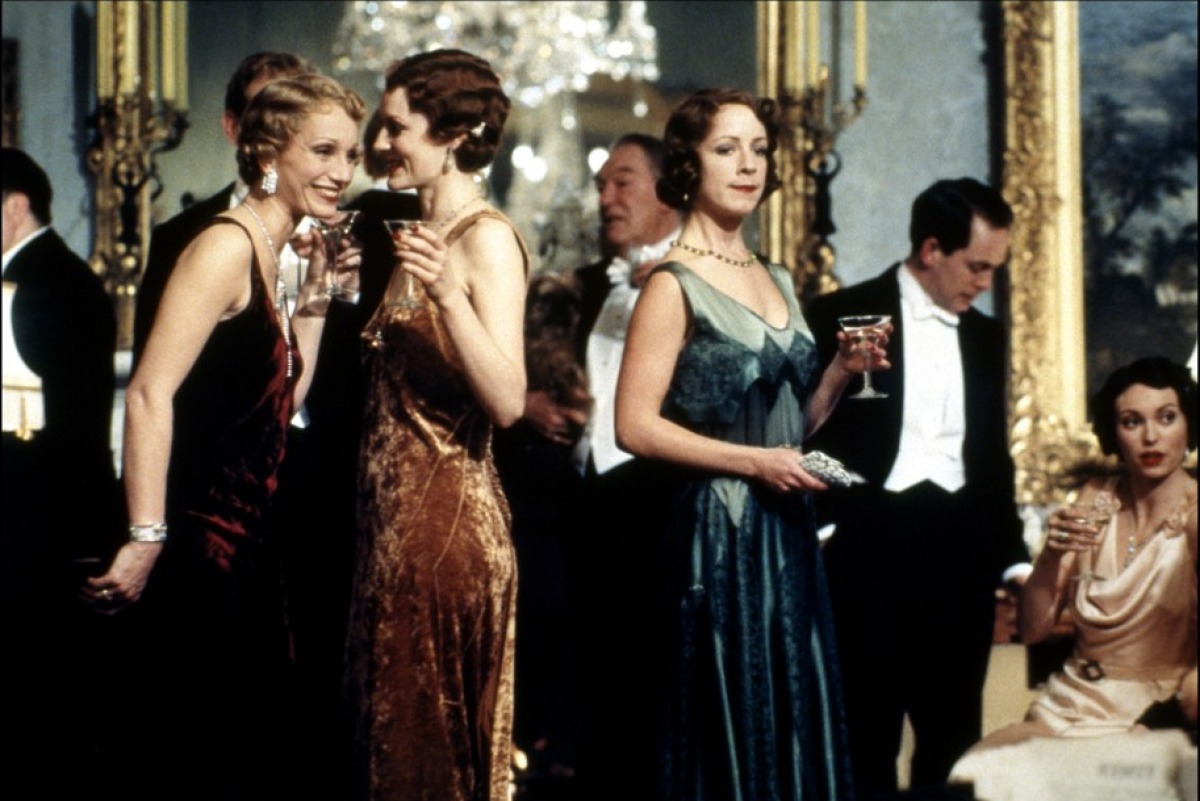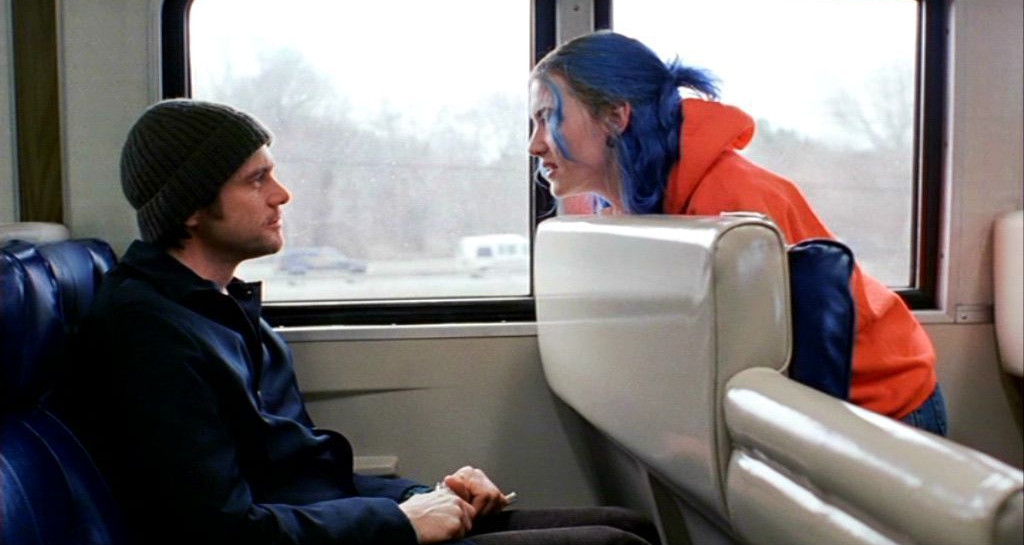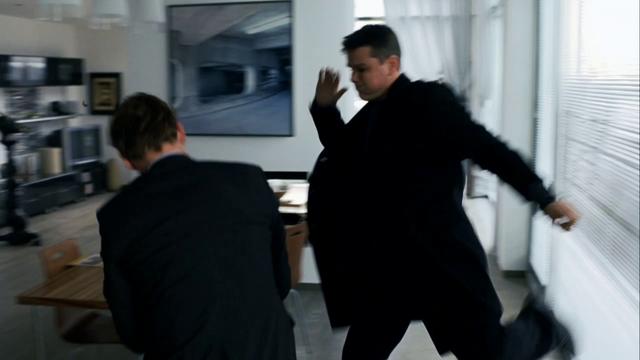6. Pulp Fiction (1994)
What it can teach you about: Camera Positioning
Pulp Fiction is told from the point of view of a variety of different characters, using a non-linear narrative (in other words, everything is out of sequence). In order for this to make any sense at all to an audience, Quentin Tarantino tells the story using classic filming conventions. All scenes are filmed with one camera, and most shots are medium or close – never letting us too far aways from the characters that ground the story.
We also regularly see point of view camera angles; especially during dialogue scenes, where we see the conversation played out using the classic shot-reverse-shot technique that switches the point of view between characters. As a result, in a complicated story we’re always firmly connected to the characters’ narrative.
7. Saving Private Ryan (1998)
What it can teach you about: Colour, Camera Movement
Blood red is a horrible colour. If it’s splashed about too freely on screen, it can inadvertently turn a picture into a video nasty. Saving Private Ryan certainly had a lot blood however, all of the colours were deliberately desaturated, reducing the brightness and adding a blue tint to the picture. The effect made the gore more palatable, while at the same time giving the film the look of an old newsreel (which was entirely appropriate for a film set during World War II).
The action sequences were filmed with a handheld camera, giving the audience a sense that they too were ducking for cover during the gunfire. The beach-landing “stuttery” effects were created by skipping frames. This heightened the sense of trauma and confusion, and really helped to convey a sense of adrenaline to the audience.
8. Gosford Park (2001)
What it can teach you: Camera movement, Lighting, Focus
Each scene in Gosford Park was shot using two cameras filming simultaneously. Unusually, in each scene the camera is always moving (even if it’s only very subtle movement). Almost everything is kept in focus, and indoor shots have soft lighting spilling in every direction. This allowed the actors to act freely, and complete scenes without the interruption of having to reposition the camera and relight each scene.
Many critics praised the “gliding” quality of Andrew Dunn’s cinematography. The set-up firmly elevates the importance of character interactions within the movie.
9. Eternal Sunshine of the Spotless Mind (2004)
What it can teach you about: Camera Movement
In the wrong hands, Eternal Sunshine of the Spotless Mind could have been a computer generated special effects bonanza. Instead, Michel Gondry thought small, and used trap doors and quick costume changes to illustrate Joel’s oscillating subconscious.
More than this, he captured the narrative using a handheld camera and made an obviously unreal experience feel like a reality based documentary. Why? As fantastical or distorted as they may be, our memories and our imaginations feel real to us. As a result, many of us not only found Gondry’s film realistic, we also found it nostalgic.
10. The Bourne Supremacy (2004)
What it can teach you about: Length of Shot, Camera Movement
The Bourne Supremacy’s cinematography really tied audiences and film critics in knots. Many loved it, many hated it. Either way, it was enormously influential on films like The Dark Knight and Quantum of Solace.
The Bourne Supremacy was so different because conventional film wisdom would say that you would pan or zoom to set the scene, then after the camera had stopped moving you’d then see an edit that takes you to the next shot.
Not so during The Bourne Supremacy. The movie frequently edits mid camera movement in an effort to disorientate the audience. While editing may be separate from cinematography, the length of a shot is often crucial to what a cinematographer is trying to convey. Cinematographer Oliver Wood created a movie with action sequences that feel wildly jerky, and have a constant sense of chaos and adrenaline as a result.
Author Bio: David Biggins is a film graduate and marketeer from England. He’s been published on the BBC website, and used to present a film radio show in Norfolk. Before joining Taste of Cinema he was a film critic for Reel Whispers.You can follow David on Twitter @MrMilktray.
